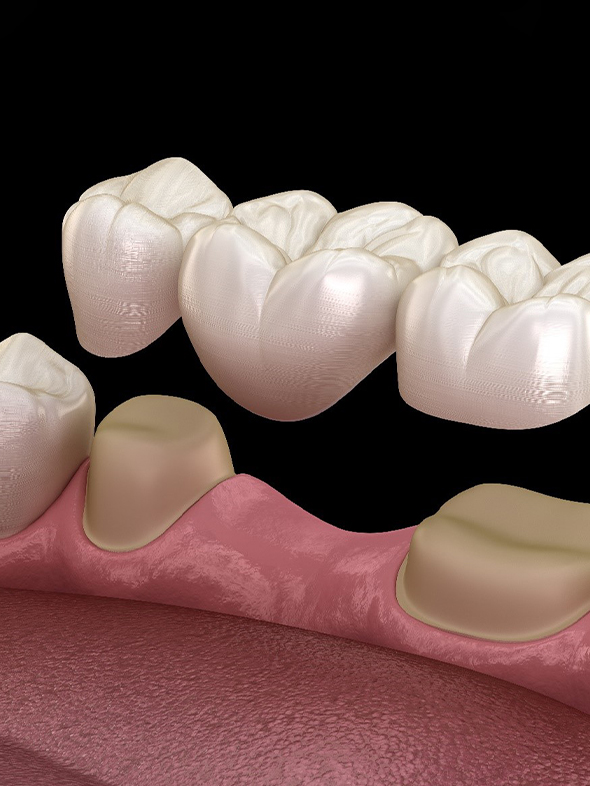1084 Main Street Holden, MA 01520
Dental Bridges

How A Dental Bridge Works
The most common type of dental bridge is the traditional bridge. This involves placing dental crowns on the adjacent teeth, known as abutment teeth, with a pontic (replacement) tooth positioned in the gap to restore the missing tooth.
A cantilever bridge is used when there is only one adjacent tooth next to the gap. Instead of requiring two crowns, this bridge is anchored by a single dental crown, with a pontic (replacement) tooth attached to it to fill the space. Cantilever bridges are often recommended for use with rear molars.
A Maryland bridge is a dental bridge that is secured using two adjacent teeth. Instead of placing crowns on the abutment teeth, a pontic (replacement) tooth is attached with metal or porcelain wings, which are bonded to the backs of the abutment teeth to hold the bridge in place.
An implant-supported bridge works similarly to a traditional dental bridge, but instead of relying on natural teeth as anchors, it uses dental implants. The implants are fitted with crowns, and a pontic (replacement) tooth is positioned in between to complete the bridge.